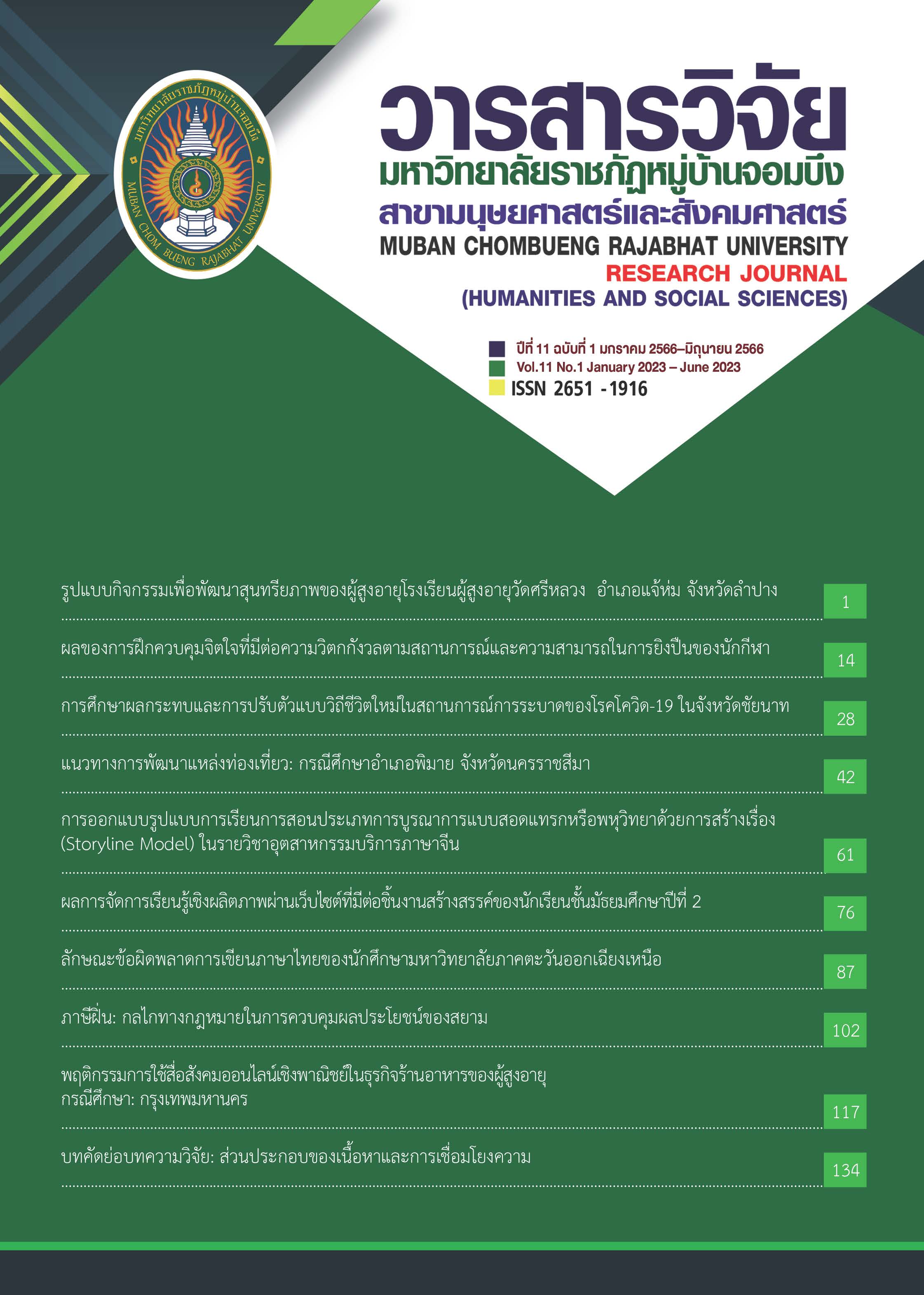Guidelines for Tourism Destination Development: A Case Study of Phimai District, Nakhon Ratchasima Province
Keywords:
Guidelines, Development, Tourism destinationAbstract
The objectives of this qualitative study were to 1. investigate the tourist destination circumstances in Phimai District, Nakhon Ratchasima Province; 2. analyze the strengths, weaknesses, opportunities, and threats of Phimai District, Nakhon Ratchasima Province; and 3. propose guidelines for the development of appropriate tourist destinations for Phimai District, Nakhon Ratchasima Province. Data were collected from documents, books, textbooks, articles, e-documents, related research, and an in-depth interview with a semi-structured interview form conducted with local people and tourism stakeholders. Content analysis was employed to analyze the data.
The findings were as follows: 1) The circumstances of tourism destination at Phimai district, Nakhon Ratchasima Province, consisted of tourist destinations, accessibility, amenities, one-stop sales service packages, tourism activities, and additional services; 2) The strengths of Phimai District are the ancient sites and antiques; its weaknesses are the lack of connection to tourism routes; in terms of opportunities, filming programs, movies, or TV series in tourist destinations in Phimai District could motivate tourists to travel there; and as for threats, the occurrence of crises, such as the spread of the new Coronavirus, affected the economic system of entrepreneurs in the tourism industry; and 3) The appropriate tourist destination development guidelines for Phimai District consisted of guidelines to develop the infrastructure and amenities; guidelines to improve the quality of tourist destinations, products, and services; and guidelines to develop the tourism personnel.
References
Boontasorn, N., Mana, S. and Poltecha, B. (2014). The Development of Community Marketing and Promote Tourism for Community Business Enterprise for Sustainable Tourism of Hunkad strict, Chainat Province. Chandrakasem Rajabhat University Journal, 20(39), 39-48.
Boonyasathit Mahakhan and Pientam. (2019). The Perception of Local History and the Adaptation and Expression of Phimai People. Academic Journal of Humanities and Social Sciences Burapha University, 27(55), 161-183.
Boonyanusith, N. Kung, S. and Lin, H. (2015).Greenways: an Important Element of Green Infrastructure. NAJUA: Architecture, Design and Built Environment, 29, 387-404.
Buhalis, D.2000.Marketing the competitive destination of the future. Tourism management, 21(1), 97-116.
Chatawanich, S. (2012). A study of the art and cultural sights of Prasat Hin Phiman and Phanom Rung. Journal of Cultural Approach, 13(23), 1-15.
Cresswell, J. W. (2003). Research Design. Thousand Oaks, CA: Sage Publications.
Denzin, N. (1978). Sociological Methods: A Sourcebook. NY: McGraw Hill.
Denzin, N. K., & Lincoln, Y. S. (1994). Preface. In N. K. Denzin & Y. S. Lincoln (Eds.), Handbook of qualitative research. Thousand Oaks, CA: Sage Publications.
Emet, G. and Merba, T. (2017). SWOT Analysis: A Theoretical Review. The Journal of International Social Research, 10(51), 994-1006.Doi Number: http://dx.doi.org/10.17719/jisr.2017.1832.
Kaewsanga, K. and Chamnongsri, N. (2015). Knowledge Management of Creative Tourism in Cultural Tourist Attractions, Phimai District, Nakhon Ratchasima. Suranaree J.Soc. Sci., 9(2), 79-103.
Khuabphimai, C. (2015). The Image of the City Theory Approach to Redevelopment Guidelines for Promoting Tourism in Phimai Town. RMUTI Journal Science and Technology, 8(3), 52-61.
Marshall, B., Cardon, P., Poddar, A., and Fontenot, R. (2013). Does sample size matter in qualitative research? A review of qualitative interviews in IS research. Journal of Computer Information Systems, 54, 11- 22. Doi:10.1080/08874417. 2013.11645667.
Maneenetr, T. (2009). The impact of tourism on local communities from the growth of tourist attractions in the Phimai Historical Park area. Journal of Business, Economics and Communications, 4(1), 17-33.
Ministry of Tourism and Sports. (2016). Thailand Tourism National Plan (2017 – 2021). Bangkok: Office of Security Service the War Veterans Organization of Thailand Press.
Panpinit, S. (2011). Research Techniques in Social Science. Bangkok: June Publishing Company Limited.
Parasakul, L. (2016). Tourist Behaviour. Bangkok: Chulalongkorn University Press.
Potisita, C. (2019). The science and art of Qualitative Research. Bangkok: Amarin Printing and Publishing Public Company Limited.
Shewasukthaworn, W. (2019). “Past-Present-Future” Directions of conservation of the Historical Park in Thailand. Journal of Architecture, Design and Construction Mahasarakham University, 1(2), 8-22.
Sinlapasate, N. (2017). Tourism Industry. Bangkok: Chulalongkorn University Press.
Sutheewasinnon, P. and Pasunon, P. (2016). Sampling Strategies for Qualitative Research. Parichart Journal, Thaksin University, 29(2), 31-48.
The Tambon Administrative Organization in the City of Phimai Thailand. (2018). Local Development Plan. Recovered from 1/3/2021: https://naimeung.go.th/.
Wannathanom, C. (2009). Tourism Industry. Bangkok: Threelada Press.
Downloads
Published
How to Cite
Issue
Section
License
Copyright (c) 2023 Muban Chombueng Rajabhat University Research Journal (Humanities and Social Science)

This work is licensed under a Creative Commons Attribution-NonCommercial-NoDerivatives 4.0 International License.
Journal of TCI is Licensed under a Creative Commons Attribution-NonCommercial-NoDerivatives 4.0 International (CC BY-NC-ND 4.0) licence, unless otherwise stated, Please read our Policies page for more information on Open Access, copyright and permissions.



